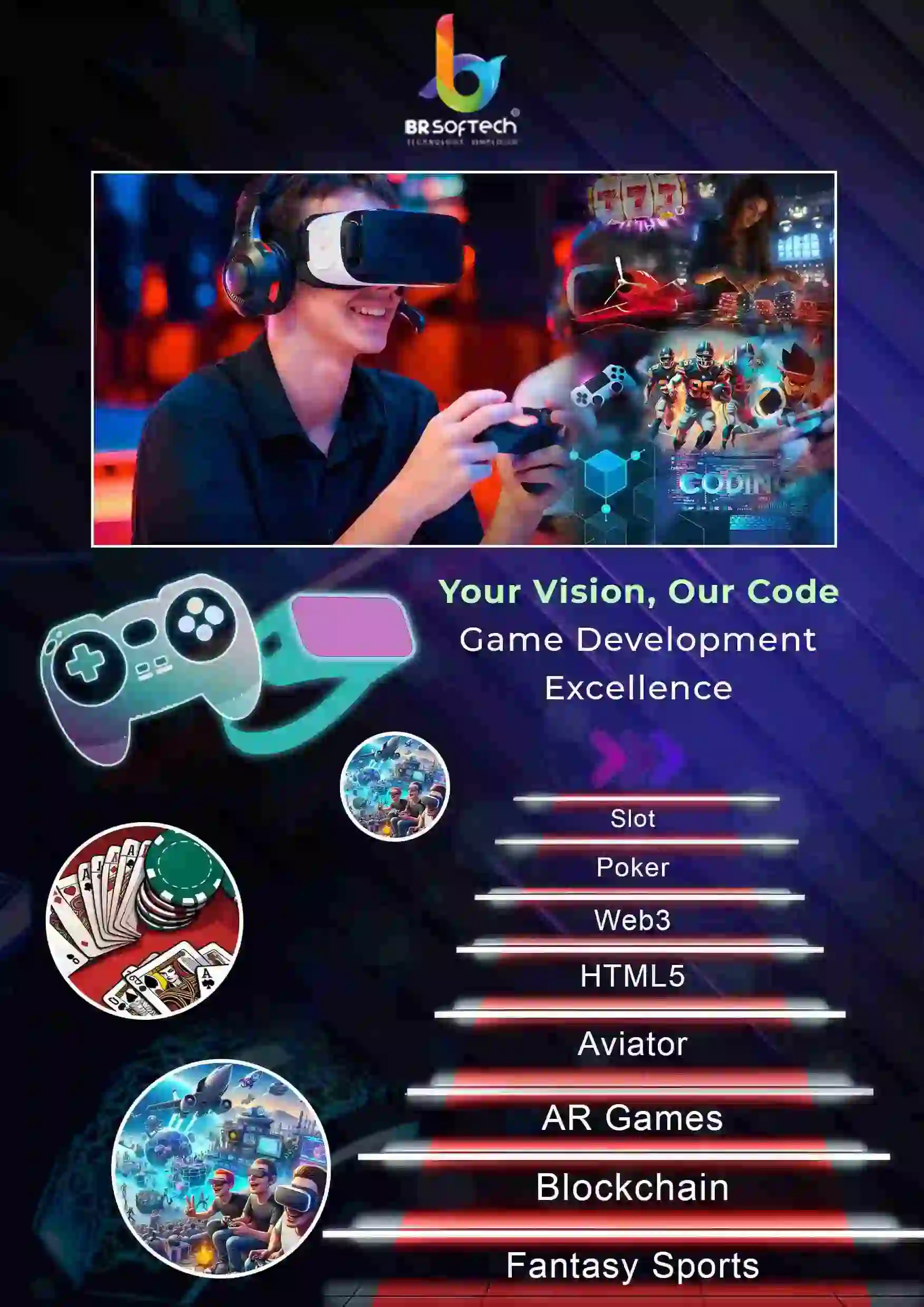Mobile gaming continues to dominate the digital entertainment industry in 2025, and the iPhone remains one of the most lucrative platforms to develop for. With Apple maintaining a premium user base and robust developer tools, the App Store provides access to a global audience and strong monetization opportunities. Independent developers and small studios are successfully launching games with minimal budgets, making this an opportune moment for new entrants.
Success stories like “Monument Valley” and “Among Us” prove that innovative concepts from small teams can achieve massive commercial success. Apple’s recent focus on AR and spatial computing also opens up unique creative avenues for new games.
2. Who Can Make an iPhone Game?
The landscape for game development has changed significantly. You no longer need a large team or extensive coding experience to start. Here are a few common profiles of people creating iPhone games today:
- Solo developers using Swift and SpriteKit or Unity
- Designers collaborating with freelance developers
- Entrepreneurs using no-code or low-code platforms like Buildbox or Unity Visual Scripting
Whether you’re technically inclined or focused on creative direction, the tools available in 2025 allow you to contribute meaningfully to the development process.
Also Read: 10 Best Mobile Multiplayer Games for Android & iOS
3. Planning Your Game
Identify the Type of Game:
- Casual puzzle?
- Hyper-casual arcade?
- 3D action or platformer?
Research the Market
Use tools like App Annie or Sensor Tower to identify trending genres and popular monetization strategies. Analyze top-performing games to understand what makes them successful.
Define Your Target Audience
Is your game aimed at children, young adults, or professionals? What are their gaming habits? Understanding your audience will shape everything from art style to monetization.
Select a Monetization Strategy
- In-app purchases
- Subscription models
- Ad-supported gameplay
Choosing a monetization model upfront will influence your game mechanics and structure.
4. Designing the Game Concept
Game Mechanics and Flow
Define your game loop: what is the core action players will repeat, and how does it escalate over time?
Wireframing and Storyboarding
Use tools like Figma, Balsamiq, or Whimsical to draft basic interfaces and screens. Lay out user journeys and interaction patterns to preemptively solve UX problems.
Prototyping Tools
Use GameMaker Studio or Construct for quick interactive prototypes. If you’re using Unity, Unity Play mode and prefab systems are excellent for testing early ideas.
Also Read: 99 Unique Mobile Game Ideas for Android and iOS
5. Choosing the Right Game Engine
- Unity remains the most versatile engine for iOS games, supporting both 2D and 3D formats and offering native support for ARKit.
- Unreal Engine 5 is better suited for high-fidelity 3D games but has a steeper learning curve.
- Godot Engine is open-source and gaining popularity due to its lightweight structure and GDScript.
- SpriteKit is Apple’s own engine for 2D games. It integrates well with Swift and Xcode but lacks the cross-platform capability of Unity.
Choose based on:
- Game type (2D vs. 3D)
- Your team’s familiarity with programming languages
- Need for platform scalability
6. Development Process: Step-by-Step
Understanding how to make an iPhone game starts with setting up a solid development workflow. Whether you’re working solo or with a team, your process should be structured, goal-driven, and mindful of the platform you’re building for. Developing for iOS requires attention to detail, adherence to Apple’s development standards, and a methodical approach to building and testing your app. Before diving into complex features, focus on getting the core game loop right—this ensures the final product feels fun and responsive. Keep changes version-controlled, and prioritize iterative testing to catch problems early. Creating games on iOS also involves working within Apple’s tool ecosystem, so getting familiar with Xcode and related frameworks is essential.
- Set Up Your Development Environment
Install Xcode and ensure you have a valid Apple Developer account. Configure your provisioning profiles correctly to avoid deployment issues later. This step is crucial in setting the foundation if you’re serious about learning how to make a iPhone game.
- Start Building Core Features
Focus on the core gameplay loop first. Implement basic mechanics before adding extras. Test small pieces regularly and use Git or another version control system to track your progress. This approach helps you stay organized and minimize bugs.
- Add Visuals and Sounds
Bring your game to life with visual assets and audio. You can design them yourself or source them from free libraries like Kenney or OpenGameArt. A well-designed visual style is just as important as good gameplay when learning how to make game for iPhone.
- Implement Game Center, Leaderboards, and IAP
Use GameKit for leaderboards and achievements, and StoreKit for in-app purchases. Properly integrating these services helps create a richer and more rewarding user experience.
- Polish and Optimize
Use Xcode Instruments to test performance, memory use, and loading times. Make sure the game runs well on multiple iPhone models and iOS versions, especially if you’re trying to figure out how to make game on iOS with a wide reach.
Also Read: Top 10 Mobile Game Engines and Development Platforms
7. Testing Your Game
Testing is where a good idea becomes a solid product. If you’re exploring how to make an iPhone game, understand that testing should not be a final step—it must be ongoing. Bugs, crashes, and poor user experience can quickly ruin first impressions, no matter how creative your concept is. Focus your efforts on testing across different devices, screen sizes, and iOS versions. Make sure the game feels just as smooth on an older iPhone as it does on the latest model. Beta testing is a great way to gather early feedback, which will help you refine mechanics and squash bugs before launch.
- Internal Testing
Use Xcode’s iPhone simulators as an initial testing environment. Then move to real devices, because simulators can’t always catch performance issues or input-related bugs. Test across different iOS versions and screen sizes.
- Beta Testing with TestFlight
Upload your build to App Store Connect and invite users for beta testing via TestFlight. Collect feedback on usability, crashes, and overall gameplay. This phase is key when learning how to make a iPhone game that appeals to real users.
- Quality Assurance Checklist
Check for crashes during gameplay, ensure IAPs and leaderboards function properly, and evaluate the user experience. Ask yourself: Is the gameplay smooth? Are users likely to come back? This list will help finalize your iOS game development process.
8. Publishing to the App Store
If you’ve made it this far, you’re nearly ready to publish. But how to make game for iPhone is not just about coding—it’s also about properly submitting and marketing your game. Apple’s review process is strict, and failing to follow their guidelines can delay or even reject your submission. You need clean assets, a well-written App Store listing, and a fully functional build that adheres to Apple’s policies. Your app’s title, description, and screenshots will help you stand out among thousands of games, so invest time in making them compelling and accurate.
- Create an Apple Developer Account
To publish on the App Store, you must enroll in the Apple Developer Program, which costs $99 per year. This is a requirement for anyone serious about how to make game on iOS and distribute it professionally.
- Prepare Your App Store Assets
Write a clean, engaging app description. Design an eye-catching icon, and capture gameplay screenshots that represent the experience accurately. A good press kit can also help with media outreach.
- App Store Review Guidelines
Familiarize yourself with Apple’s Human Interface Guidelines and App Store policies. Avoid placeholder content, unapproved APIs, or unsupported hardware functions. Following these steps increases your chances of a smooth review.
- Submit for Review
Use Xcode or Transporter to upload your final build. Review times usually range from one to three days, though they can vary. Be ready to respond to any clarification Apple requests.
9. Post-Launch: What Comes Next
Launching is only the beginning. Anyone learning how to make an iPhone game should realize that what happens after release is just as important as development. Early feedback, user reviews, and analytics provide valuable insight into how your game performs in the real world. Use this data to guide updates, fix bugs, and even add new content. Regular updates show players you’re invested in the experience and can improve retention. Consider adding seasonal content, hosting in-game events, or tweaking features based on usage patterns.
- Gather Feedback
Monitor user reviews, social media, and analytics dashboards. Pay attention to recurring comments or issues. This feedback loop will guide your next steps and improve the game’s reputation.
- Release Updates
Push fixes and new features regularly. Even small changes, like UI tweaks or added achievements, can keep your audience engaged.
- Market Your Game
Post your game in relevant forums, gaming communities, and blogs. Consider running ads on social media. Short video clips or trailers can boost visibility significantly when marketing a game made for iOS.
Also Read: How to Make an Android Game?
10. How Much Does It Cost to Make an iPhone Game?
The cost of how to make a iPhone game can vary wildly based on scope, design, and technical complexity. Indie developers often bootstrap with free tools and marketplace assets, while larger studios may spend tens of thousands on production quality. If you’re working with freelancers, asset costs and hourly rates quickly add up. Also budget for marketing, store fees, and post-launch updates. Planning realistically—and allowing for unforeseen costs—is key to finishing your game without burning out or running out of funds.
- Basic Games:
$2,000 to $5,000 using asset packs, simple mechanics, and solo or freelance help.
- Mid-Level Games:
$10,000 to $50,000, depending on original artwork, sound, and additional features like Game Center integration.
- High-End Games:
$100,000 or more for games with online multiplayer, advanced 3D graphics, or AR functionality.
- Timeframe Estimates:
- Simple 2D game: 1–3 months
- Mid-tier 3D game: 4–6 months
- Complex or feature-rich game: 8–12 months or more
11. Common Mistakes to Avoid
Learning how to make game for iPhone often comes with trial and error, but many pitfalls are preventable. Beginners frequently overstuff their game with unnecessary features or neglect testing across devices. Others violate Apple’s submission guidelines, resulting in time-consuming rejections. Soft launches and beta tests are skipped, which means bugs and balance issues reach the App Store. These mistakes can stall development or damage your reputation. Planning, testing, and following guidelines are the simplest ways to avoid them.
- Overcomplicating the first version
- Ignoring Apple’s interface or technical guidelines
- Not testing thoroughly across different iPhones
- Skipping soft launches or early user testing
12. Helpful Tools & Resources
If you’re serious about how to make game on iOS, equipping yourself with the right tools can make all the difference. Unity Learn offers quick tutorials for game mechanics and UI design. Udemy courses provide more structured lessons. GitHub is essential not only for version control but also for discovering open-source templates. Use GameAnalytics or Firebase to track in-game behavior and identify trends. For design or testing help, platforms like Fiverr and Upwork offer freelance services at different price points. Building your resource stack early will save you time and frustration down the line.
- Unity Learn and Udemy for guided tutorials and game dev foundations
- GitHub for open-source tools and project versioning
- GameAnalytics or Firebase for understanding user engagement and retention
- Fiverr or Upwork to hire artists, voice actors, or QA testers
Why Choose BR Softech for iPhone Game Development?
At BR Softech, we approach iPhone game development with a focus on quality, accountability, and long-term results. We combine deep technical expertise with a collaborative, transparent process to support clients at every stage of their game’s journey—from concept to post-launch growth.
Proven iOS Development Experience
With over 12 years in mobile development, our team has built games across every major Apple platform update—from the early A7 chip to the latest Apple silicon, including support for iOS 18 and emerging technologies like Vision Pro. Our portfolio includes a wide range of genres, mechanics, and monetization models designed to perform in today’s App Store environment.
Complete In-House Capability
We operate as a full-stack studio, bringing together engineers, designers, and QA specialists under one roof. This includes:
- Dedicated teams for Unity, Unreal, Godot, and SpriteKit
- In-house creative studio for 2D/3D/AR game assets
- Backend developers experienced in PlayFab, Firebase, Photon, and custom servers
- Quality assurance across a wide device lab of physical iPhones and iPads
Secure and Scalable Infrastructure
Clients rely on us not only for delivery but for peace of mind. Our systems are designed with enterprise standards in mind, including:
- ISO 27001 and SOC 2 Type I certified workflows
- Sprint-based project management with full client visibility
- Continuous deployment pipelines optimized for iOS with rollback safety nets
Focused on Outcomes, Not Just Output
Game success doesn’t end at launch. We work with you to optimize core KPIs like retention, session length, and revenue per user. From data-informed design decisions to A/B tested monetization strategies, we aim to help every title meet its full commercial potential.
Post-Launch Support That Grows With You
Our engagement doesn’t stop at submission. We offer live-ops, content updates, technical support, and community moderation services tailored to your roadmap and audience feedback.
Have a game concept or MVP in mind?
Let’s discuss how BR Softech can help shape it into a standout iPhone gaming experience.
Request a Free Consultation →
FAQs: Making iPhone Games
Q1. Can I build a game without coding? Yes. Platforms like Buildbox and Unity Visual Scripting allow drag-and-drop development.
Q2. Is Unity still a good choice in 2025? Yes. Despite changes to pricing models in 2023, Unity remains dominant due to its flexibility and massive support ecosystem.
Q3. How can I monetize my game effectively? Start with one model (ads or IAPs), optimize through analytics, and diversify as your user base grows.
Q4. Do I need a Mac to build iPhone games? Yes, for testing and submission. However, cloud-based Mac services like MacStadium can offer workarounds.
Q5. What’s the biggest challenge for new devs? Retention. Getting downloads is easier than keeping players. Focus on gameplay hooks and regular updates.








